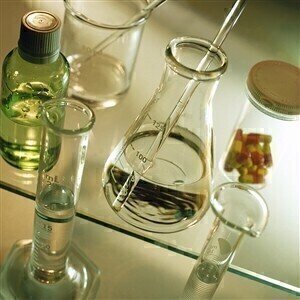HPLC, UHPLC
Adsorption, Absorption and Desorption - What's the Difference?
Aug 24 2014
Sorption describes the actions of absorption and adsorption - desorption is the opposite of sorption. Adsorption and absorption are important processes that occur in chemistry and biology. It is important to have an understanding of both processes and the differences between them when considering separation protocols, particularly in gas and liquid chromatography.
The major difference between adsorption and absorption is that one is a surface process and the other a bulk process.
- Adsorption — takes place on the surface of a substrate
- Absorption — one substance enters the bulk, or volume, of another substance e.g. a gas absorbed by a liquid
Adsorption
Adsorption is a surface process, the accumulation of a gas or liquid on a liquid or solid. Adsorption can be defined further based on the strength of the interaction between the adsorbent (the substrate onto which chemicals attach) and the adsorbed molecules.
- Physisorption — Van der Waals interactions between substrate and adsorbate (the molecule that is adsorbed)
- Chemisorption — Chemical bonds involved (covalent bonds usually) in sticking the adsorbate to the adsorbent
Chemisorption involves more energy than physisorption. The difference between the two processes is loosely based on the binding energy of the interaction.
Absorption
Absorption is a phenomenon involving the bulk properties of a solid, liquid or gas. It involves atoms or molecules crossing the surface and entering the volume of the material. As in adsorption, there can be physical and chemical absorption.
- Physical absorption — A non-reactive process e.g. when oxygen present in air dissolves in water. The process depends on the liquid and the gas, and on physical properties like solubility, temperature and pressure.
- Chemical absorption — A chemical reaction takes place when the atoms or molecules are absorbed. An example is when hydrogen sulphide is removed from biogas streams and converted into solid sulphur.
Desorption
Desorption is the release of one substance from another, either from the surface or through the surface. Desorption can occur when an equilibrium situation is altered. Imagine a tank of water in equilibrium with its surroundings. The amount of oxygen entering and leaving the water from the air will be the same — and the oxygen concentration in the water will be constant. If the water temperature increases, the equilibrium and solubility are changed, and the oxygen will desorb from the water — lowering the oxygen content.
Adsorption and Desorption in Chromatography
Adsorption and desorption are the main processes operating in chromatography. It is the relative rates of adsorption and desorption onto and off the stationary phase that allows chemicals in samples to be separated.
If the column conditions favour adsorption of a molecule, then the molecule will adhere to the stationary phase and be separated from the other sample chemicals. When the conditions favour desorption, the opposite will happen — and the chemicals will be released into the mobile phase.
The role of adsorption in chromatography columns is discussed in the article: Improved GC Columns for the Petroleum Industry.
Digital Edition
Chromatography Today - Buyers' Guide 2022
October 2023
In This Edition Modern & Practical Applications - Accelerating ADC Development with Mass Spectrometry - Implementing High-Resolution Ion Mobility into Peptide Mapping Workflows Chromatogr...
View all digital editions
Events
Apr 28 2024 Montreal, Quebec, Canada
May 05 2024 Seville, Spain
May 15 2024 Birmingham, UK
May 19 2024 Brno, Czech Republic
May 21 2024 Lagos, Nigeria















